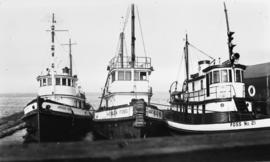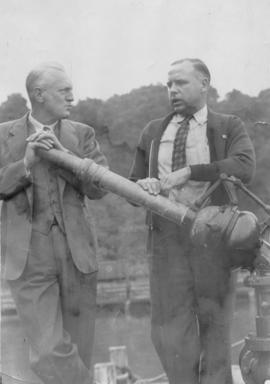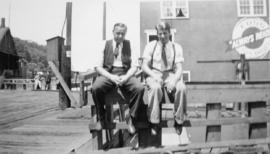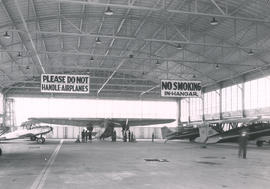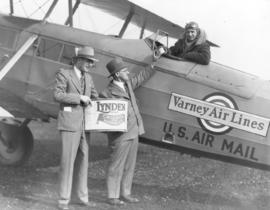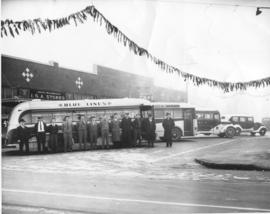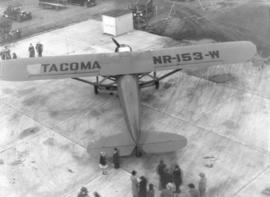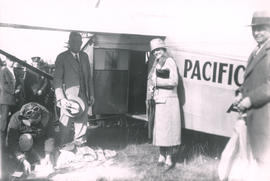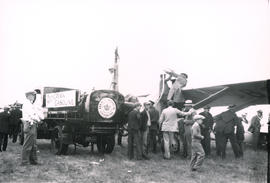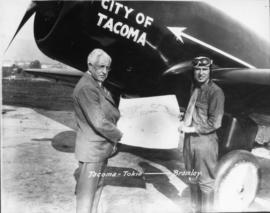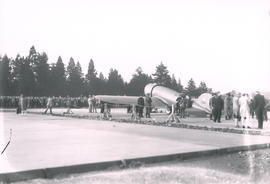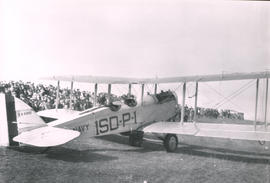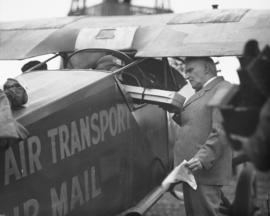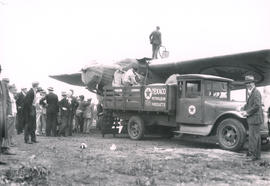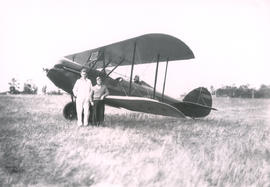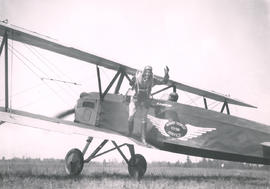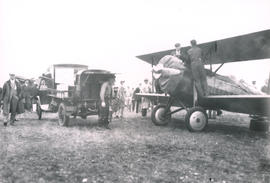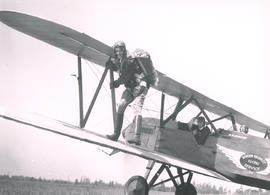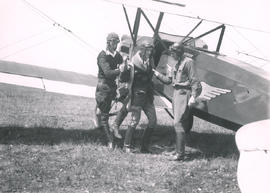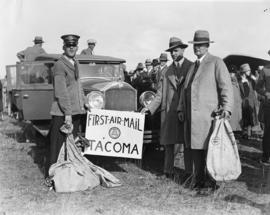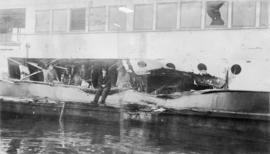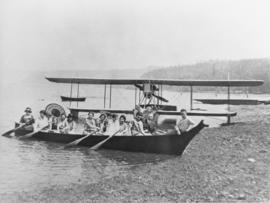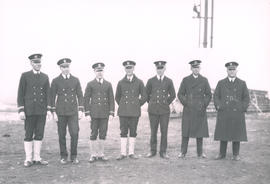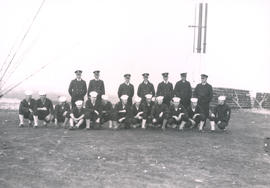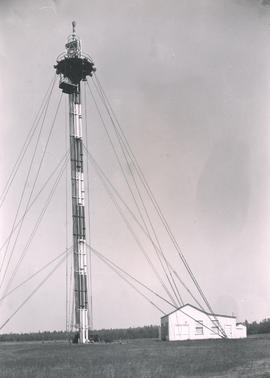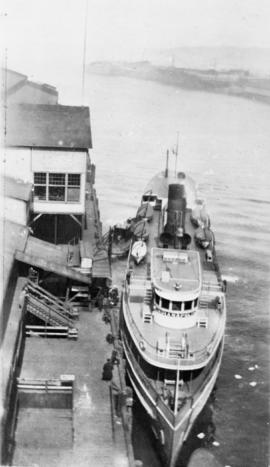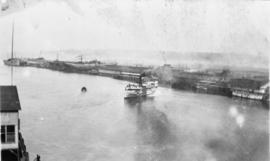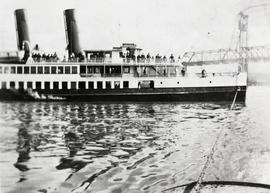- Item
- 1948
Part of General Photograph Collection
ca. 1948. Three deep sea Foss tugs based out of Port Angeles, left to right, the Arthur Foss, Mathilda Foss and Foss No. 21. These three ships were used periodically for deep sea tows to Alaska, but after the end of World War II that duty was taken over by Miki class tugs purchased as surplus from the military. The three were then used for log tows out of Port Angeles. The Arthur Foss is probably the most famous Foss tugboat. It began its life in 1898 in Portland Oregon as the steam tug "Wallowa." The 110 foot tug became a star when it appeared in the 1933 motion picture classic "Tugboat Annie" as the "Narcissus." The movie was based on Saturday Evening Post short stories written by University of Washington writing teacher Norman Reilly Raine and loosely based on the Foss family business legend. The vessel was overhauled in 1934 and renamed the "Arthur Foss." It served in World War II, returned to Port Angeles in 1948 and was retired in 1968. Donated in 1970 to the nonprofit "Save Our Ships," it was lovingly restored. The "Mathilda Foss" was built in 1909 as a US Army passenger and freight vessel, the "Captain Gregory Barrett." The 91 foot vessel was retooled in 1937 as an ocean going tug and renamed the "Mathilda Foss." It also served in World War II and entered Port Angeles service in 1946. It was sold in 1963 and sunk in 1978 as an eyesore. The "Foss 21" began life as the Tacoma built "Fearless." Built in 1900, the 80 foot tug was one of the most powerful tugs at the turn of the century. It was based out of Port Angeles and used primarily for tows on the Quillayute River. (photograph courtesy of the William T. Case collection) ("Foss: A Living Legend" by Bruce Johnson and Mike Skalley)
Foss Launch & Tug Co. (Tacoma); Tugboats--Port Angeles--1940-1950;
